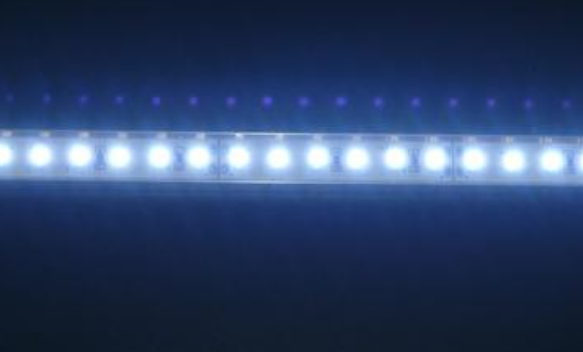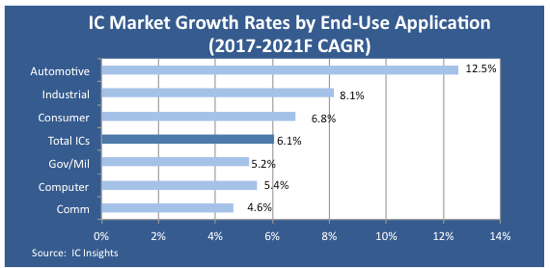The key conclusion
1. Mini-led backlight has many advantages, especially high contrast, high performance HDR, better color gamut, and excellent dimming for dynamic contrast range.The biggest bottleneck is the high cost, even higher than OLED.OLED panel makers, particularly samsung display, lg display and Chinese suppliers, are developing so-called hybrid oleds that combine rigid OLED glass backboards with flexible thin-film packaging for use in PC OLED panels.
2. Taiwanese panel makers such as au and innolux are developing mini-led backlit panels for the game market, which will compete with LCDS and oleds.
Apple is considering a mini-led backlight on its 165Hz 32-inch 6K x 3K oxide LCD monitor.The main target is the HDR 600, with 1000 nits brightness and local dimming and daci-p3 gamut.
4. For iPad Pro, the mini-led backlight with LTPS TFT LCD panel has been considered, but there are still doubts about the thickness and price of the panel.For laptop monitors, the time for mini-led backlit panels is a long way off.
As we analyzed in the monitor backlight market tracker report, mini-led backlighting has many advantages, especially high contrast, high performance HDR, better color gamut, and excellent regional dimming for dynamic contrast range.The biggest bottlenecks are high costs, especially for mini-led chips, defined as more than 100 microns and less than 200 microns, which are more difficult to process.In addition, Mini LED backlighting components are more complex, keeping costs high.
IHS Markit believes that the manufacturing cost of mini-led backlit LCDS is still too high to compete with traditional displays. However, for the difficulty of mass production of micro-led displays, mini-led backlit LCDS have become an economical and effective alternative.However, the cost is still thought to be much higher than LCD and organic light-emitting diode (OLED) panels.LED chips still play a key role in reducing the cost of mini-led backlit LCDS, as they account for the majority of manufacturing costs.As far as we know, many of the new mini-led backlit LCDS use far fewer LED chips to control costs.
Here are the pros and cons of the mini-led backlit LCD panel and how it compares to OLED and Micro LED display.
Mini-led backlighting costs more than LCD and OLED.

Lg display has been committed to OLED TV panel production and yield, and successfully reduced the cost of OLED TV panel, relying on the good yield and production scale.Samsung display, on the other hand, has successfully mass-produced OLED panels for laptops and tablets.The mini-led backlighting also faces challenges in competing with samsung's display, which has successfully introduced OLED in laptops while bringing down the cost of OLED in tablets.
Mini-led backlit LCDS are better than oleds in contrast, HDR (high dynamic range) and so on, but because they have backlit components, they will essentially be thicker than oleds, which could be a big hurdle for applications such as laptops and tablets, where ultra-thin construction is crucial.
For mini-led backlighting, the biggest advantage of LCD monitor is that it is very suitable for game monitor, especially in the game industry. For vivid and wonderful game scenes, it needs very high color gamut and high performance HDR.Mini-led backlighting also complements the perfect narrow frame.
Mini-led backlit LCDS are significantly cheaper than micro-led displays, although they cost more than regular backlit and OLED LCDS.
Another possible drawback to mini-led backlit displays, IHS Markit says, is so-called halo image defects.This was found in early prototype mini-led backlit LCD panels.This is caused by the luminance effect of LED chips, but can be devastating for some display applications, especially in IT applications where the screen background is usually white, such as web browsing or document work.
On the other hand, OLED manufacturers, particularly samsung display, lg display and Chinese suppliers, are developing so-called hybrid oleds that combine rigid OLED backlighting with flexible thin-film packaging.This approach reduces the thickness of OLED panels, but at the same time allows for better yield and stability in the production of rigid glass substrates, rather than polyimides, a Hybrid OLED that would be a strong rival to Mini LED backlight LCDS.
However, some panel makers are not yet ready for OLED, and they have found that some kind of mini-led backlit supply chain can be used to improve panel pixel performance, especially in areas such as gamma-ray, local dimming and HDR.TFT LCD panel manufacturers have begun to develop and market mini-led backlit LCDS for PC applications.Such panel makers mainly include au, innolux and lg display as they target gaming PC applications, including gaming LCDS and gaming laptops.
Another opportunity for mini-led backlit LCDS, IHS Markit says, is that oleds are inherently less suited to high frame rates, but are a necessary feature for gaming applications.
Below is a current status chart of new game displays.

Apple is considering using mini-led backlit LCDS as displays for imacs, macbooks and ipads.Of course, apple is also considering oleds, especially hybrid ones, as an option for such display applications.However, because of apple's consideration, the mni-led backlit supply chain is now active, although the actual application has not yet been proven or shipped.
IMac 31.6- 6Kx3K inches
IHS Markit believes apple wants to restart the standalone monitor business with a 31.6 inch mini-led backlight.This is designed to work with Mac Pro with powerful cpus such as Xeon E5 and AMD gpus such as AMD D700.High resolution (6Kx3K) and HDR are to be expected.Mini-led is a possible backlight technology solution with at least 200 areas of dimming.IHS Markit estimates that the leggin display is the supplier of the oxide LCD panel that offers a Mini LED backlight via the Radiant.However, IHS Markit reckons that the LED is estimated to be 600 microns in size, so it is not really a "mini" -led.
The biggest challenge is cost.IHS Markit estimates that a 144-hertz 32-inch mini-led Monitor LCD panel costs more than $1,200, more than an OLED TV panel.
The iPad Pro is 11 inches
Demand for the 11-inch iPad Pro was not encouraging, according to IHS Markit's display &OEM information services for tablets and laptops.Apple did consider using a hybrid OLED to refresh its 11-inch LCD, which comes from samsung's display and is still under development.However, given the limited supply of OLED displays, the status of the 11-inch hybrid OLED iPad Pro project is unclear, and apple is still considering it.Some panel makers have begun offering apple an 11-inch mini-led backlight using LTPS TFT LCDS.In order to balance low power consumption and high contrast, a small LED backlight using LTPS TFT LCD is proposed.Panel makers like lg display and au are working on it, but aren't sure what apple's iPad is aiming for.Radiant is also working on backlighting.They faced two major challenges: the thickness and high cost of the mini-led backlight, and possible halo image defects.IHS Markit estimates that apple has a long way to go before it actually USES 11-inch mini-led backlit LCDS.
The biggest challenge for the iPad Pro, whether it's a hybrid OLED or a mini-led backlight with an LTPS TFT LCD panel, is gamut.According to IHS Markit, apple insisted on a color gamer of daci-p3 (90%/HDR400).OLED is harder to implement than daci-p3, while mini-led backlighting is more suitable.
16 inch MacBook
According to IHS Markit's "display &OEM information services for tablets and laptops" report, the MacBook Pro will be upgraded to the new Intel Gen9 processor in the fourth quarter of 2019, introducing a new 16-inch size to the portfolio.Hybrid OLED and mini-led backlit LCD panels are competing to enter this potential project.IHS Markit suggests the Hybrid OLED is the samsung display, with rakin and auda proposing a 16-inch QXGA mini-led backlight panel with an oxide LCD panel, and Radiant as a mini-led backlight supplier.Still, apple may be mulling a 16-inch product, not to mention what the display will do with its mix of OLED and oxide mini-led backlit LCD options.
As we can see from apple's iMax website, the new iMac 21.5-inch 4K display already has a 90% gambit and 500nit on the daci-p3.In fact, the 27-inch iMac Pro with 5120X2880 resolution already has 500 nit brightness and daci-p3 gamut specs.
In September 2015, apple's iMac desktop became the first consumer computer with built-in wide-area display, supporting P3 color space.In June 2017, apple unveiled the second generation of the 12.9-inch iPad Pro and the new 10.5-inch iPad Pro, both with displays in P3 colors.In December 2017, apple released the iMac Pro, which USES P3's wide color range.In fact, the iPhone X and XS already have flexible oleds that are 100% dci-p3.
IHS Markit thinks apple might consider a 100% DCI P3 with a higher dynamic contrast than the HDR600 (maximum brightness of 1000 nits, with the help of local dimming) to reflect the correct color range, which could be an important standard for mini-led backlighting rather than OLED.

 Englisch
Englisch  Chinesisch
Chinesisch  Deutsch
Deutsch  Koreanisch
Koreanisch  Japanisch
Japanisch  Farsi
Farsi  Portuguese
Portuguese  Russian
Russian  Spanisch
Spanisch 





